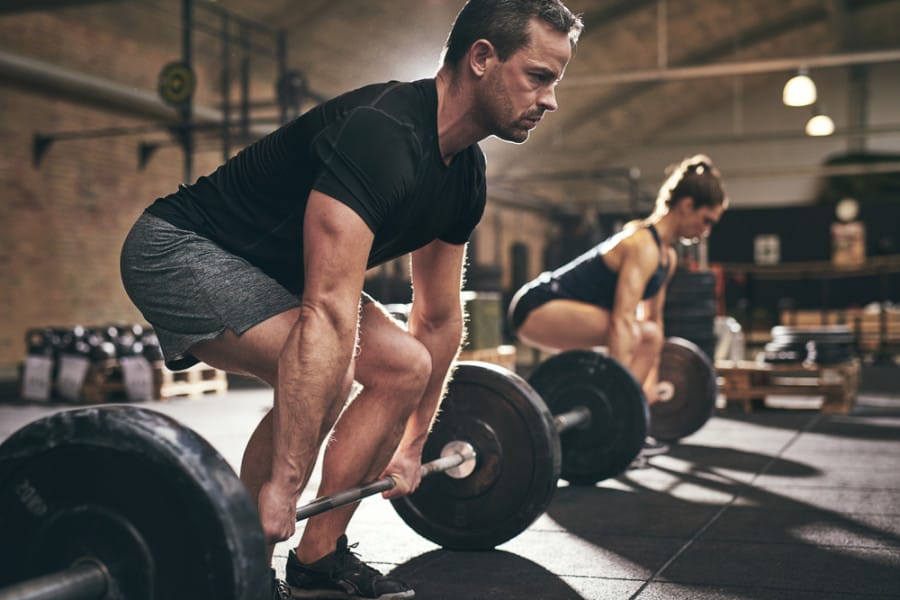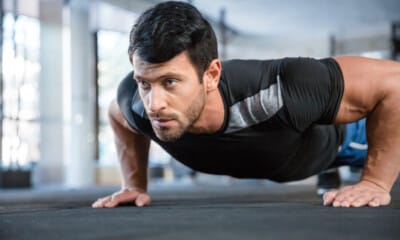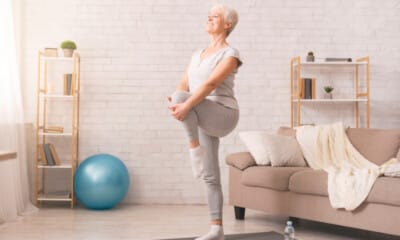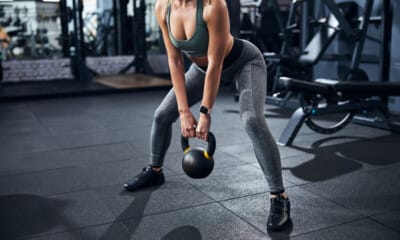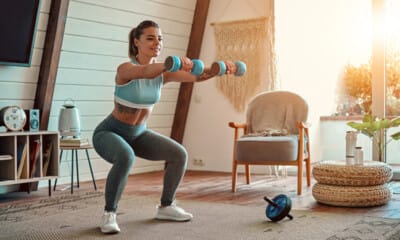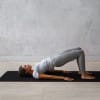Try These 5 Substitutes Instead Of Muscle Breaking Deadlifts
Deadlifts are known for their ability to build overall body strength. But not everyone can or should do them. The good news is, there are plenty of other effective exercises you can try as alternatives.
Wondering what exercises you can do instead of deadlifts? We have you covered. Swap out traditional deadlifts with the following moves in your workout routine if deadlifts don’t suit your body or if you have limited equipment.
Muscles Worked in Deadlift
Before looking into the best alternatives, it’s beneficial to understand which muscles deadlifts target. This knowledge helps you know which muscles need to be engaged when you opt for deadlift substitutes.
Deadlifts primarily engage the muscles of your posterior chain, which are located on the back side of your body, as described by the American Council on Exercise (ACE). These muscles include:
- Glutes (butt)
- Hamstrings (back of thighs)
- Erector spinae (deep back muscles)
- Latissimus dorsi (mid-back muscle)
- Rhomboids (shoulder muscles)
- Trapezius (upper-back muscle)
In addition, deadlifts activate all your core muscles, especially the obliques (side torso muscles) and transverse abdominis (deepest abdominal muscle that extends from ribs to pelvis), to stabilize your torso.
Moreover, your forearm flexors are used to assist in gripping the bar securely.
Advantages and Disadvantages of Deadlifts—and When to Consider Alternatives
Deadlifts offer a versatile workout with numerous benefits. They help build full-body strength, particularly enhancing strength in the legs, back, core, and grip. This strength improvement carries over to daily activities, making tasks like lifting heavy objects off the floor easier.
Another advantage of deadlifts is muscle building. While they are typically seen as a lower-body exercise, many individuals incorporate deadlifts into back-focused workouts because they effectively build muscle in the lats, rhomboids, and traps.
Developing a strong deadlift can also enhance athletic performance by strengthening muscles that support running, jumping, and other sports-related movements. Increased force production in the gym can translate to enhanced speed and explosiveness on the field or court.
However, deadlifts may not be suitable for everyone. Individuals with a history of back pain may need to avoid this exercise. Also, taller individuals often struggle to perform deadlifts effectively due to strong and efficient positioning challenges. This also applies to individuals with limited hip mobility or a history of lower-body injuries. Deadlifts involve technical complexity and can be intimidating for beginners in the gym.
Fortunately, you don’t have to do deadlifts to reap their benefits. Many people discover that other deadlift variations are more compatible with their bodies. If deadlifts are not feasible for you, you can still strengthen and build muscles in your legs, butt, and back using alternative exercises.
The Top Alternatives to Deadlifts
1. Sandbag Good Morning
A good morning exercise is a hip-hinging movement that can replace deadlifts. Instead of holding the weight below with straight arms, you position the weight on your upper body. This activates your core and back more intensely to prevent forward leaning.
You can perform good mornings with a barbell on your back, though this may not be suitable for everyone. Using a sandbag (or another weight like a dumbbell) held in front of your chest could be preferable as it is easier to learn and requires less upper-body mobility.
- Stand upright with feet hip-width apart and place a sandbag directly in front of your feet.
- Slightly bend your knees and hinge at your hips to grasp the sandbag handles with straight arms.
- Bring the sandbag to your chest by pushing against the floor with your legs to lift the bag and wrap your arms around it.
- Stand tall with the bag close to your chest.
- Initiate each good morning repetition by hinging at your hips.
- Continue hinging until you feel your hamstrings stretch, keeping your chest up and torso upright.
- Complete the rep by driving your legs into the floor and returning to the upright position.
- When finished, carefully return the sandbag to the floor by hinging at your hips and releasing your arms.
2. 45-Degree Back Extension
While many view the 45-degree back extension machine as a lower-back exercise, it can effectively strengthen and build the hamstrings and glutes.
To make this a suitable alternative to deadlifts, focus on hinging from your hips rather than your waist and limiting movement in your spine. Position the support pads below your hips and utilize a smaller range of motion.
- Adjust a 45-degree back extension machine so that the top of the support pads is below your hips.
- Start in a plank position with a straight line from shoulders through hips, knees, and heels while looking down.
- Hinge at your hips without rounding the low back, moving your torso toward the floor until you feel a significant hamstring stretch.
- Complete the movement by pressing your thighs into the support pads and contracting your glutes.
- Return to the initial position without hyperextending the low back.
3. Hip Thrust
Hip thrusts target many of the same lower-body muscles as deadlifts. Although the movement pattern differs (not a hip hinge), they serve as a viable alternative if you’re uncomfortable with deadlifts.
- Prepare a barbell with bumper plates near a bench and place a foam pad around the bar for comfort.
- Sit against the bench as upright as possible and position the barbell in the crease of your hips. Adjust your leg positioning before starting.
- Initiate the movement by pushing your feet into the ground and raising your hips toward the barbell.
Exercise Alternatives to Deadlifts
-
- Squat with Dumbbells
If you’re looking for an alternative to deadlifts, squats with dumbbells can be a great option. This exercise targets your legs and glutes effectively.
-
-
- Stand with your feet shoulder-width apart, holding dumbbells in each hand by your sides.
- Lower your body into a squat position by bending your knees and pushing your hips back.
- Keep your chest up and back straight as you lower yourself down.
- Push through your heels to return to the starting position.
- Glute Bridge
-
The glute bridge is a great exercise to target your glutes and hamstrings.
-
-
- Lie on your back with your knees bent and feet flat on the floor.
- Raise your hips up until your body forms a tabletop position and your hips are fully extended.
- Finish the rep by slowly lowering your hips back to the ground.
- Leg Curl with Workout Sliders
-
Leg curls target your hamstrings in a unique way compared to deadlifts. Using workout sliders for this exercise engages your core muscles as well as your hamstrings.
-
-
- Lie on your back with your knees bent and heels on the workout sliders.
- Lift your hips off the floor without hyperextending your back.
- Slide your feet away from your body to straighten your legs.
- Curl your feet back to the starting position, keeping your hips off the floor for an added challenge.
- Straight-Arm Pulldown with Hip Hinge
-
This exercise helps in building back muscles similarly to how deadlifts target them.
-
- Set up a cable pulley at the highest setting with a rope or straight bar attached.
- Grab the bar with your hands shoulder-width apart.
- Hinge at your hips and bend your knees slightly, feeling a stretch in your hamstrings.
- Pull the bar down toward your legs with straight arms, engaging your upper- and middle-back muscles.
- Return the bar to the starting position slowly, keeping your arms straight throughout.
Tips for Avoiding Injury
To reduce the risk of injury when performing these deadlift alternatives, take your time and avoid using excessively heavy weights. Warm up before exercising and prioritize rest, recovery, and overall well-being to minimize injury risks.


